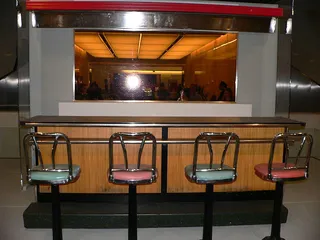Take Our Black History Tour
Historic sites that honor Black history year-round.




Next Gallery
Where Are They Now: The Cast of In Living Color
13 Photos
1 / 17
Woolworth’s Lunch Counter - BET.com gives you a look at historic sites that celebrate Black History all year long. — Britt Middleton 14th Street and Constitution Avenue NW, Washington, D.C. In February 1960, four African-American college students staged a six-month sit-in after they were refused service at the “whites only” lunch counter of a Woolworth’s store in Greensboro, North Carolina. Their protest would spark others like it around the country. You can see remnants of the original Woolworth's counter at the Smithsonian Institution National Museum of American History in Washington, D.C. (Photo: Wikicommons)
Photo By Wikicommons
ADVERTISEMENT